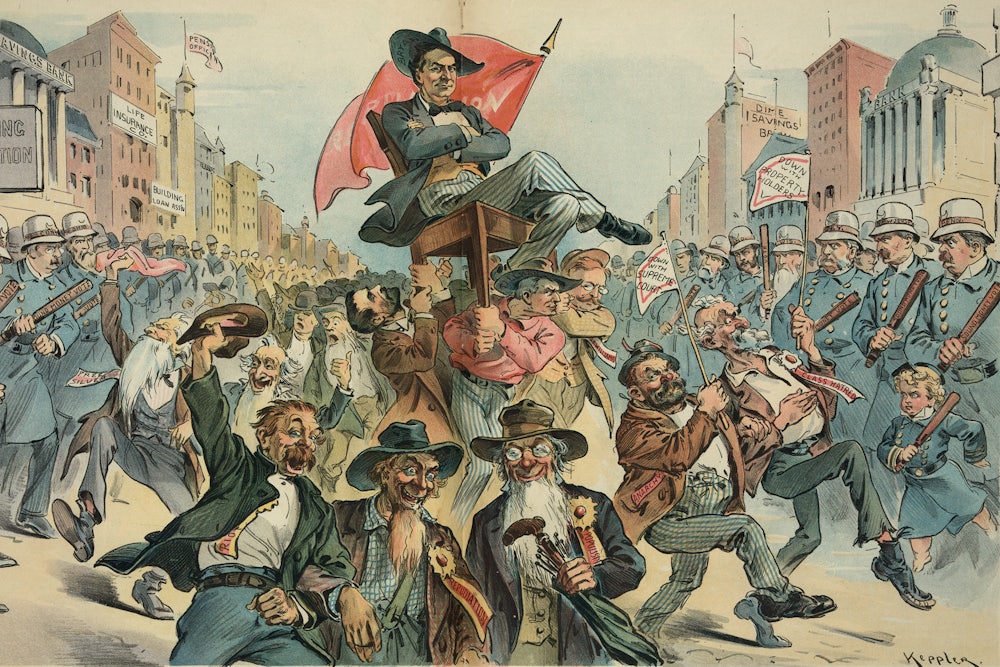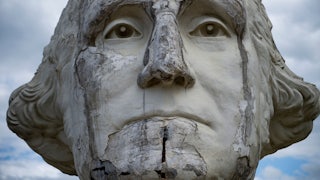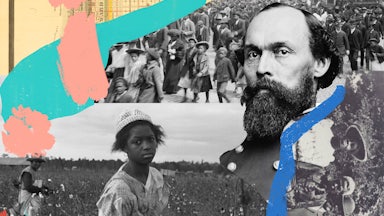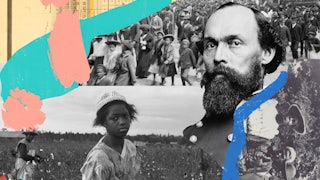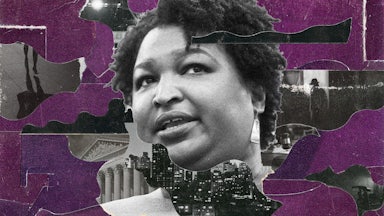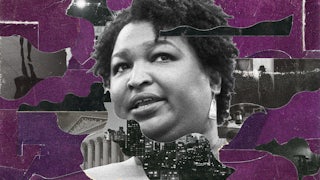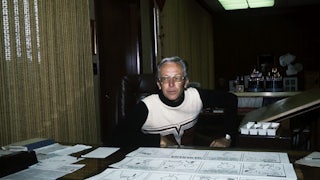The politics of Gilded Age America has always lent itself to a certain mock-heroic streak in historical storytelling; the name of the era comes down to us, after all, from an 1876 satirical novel by Mark Twain and Charles Dudley Warner. And like that saga of rampant corruption, the clash of big-ticket interests and constituencies amid the rise of industrial capitalism tends to take on outsize, lurid proportions in retrospect.
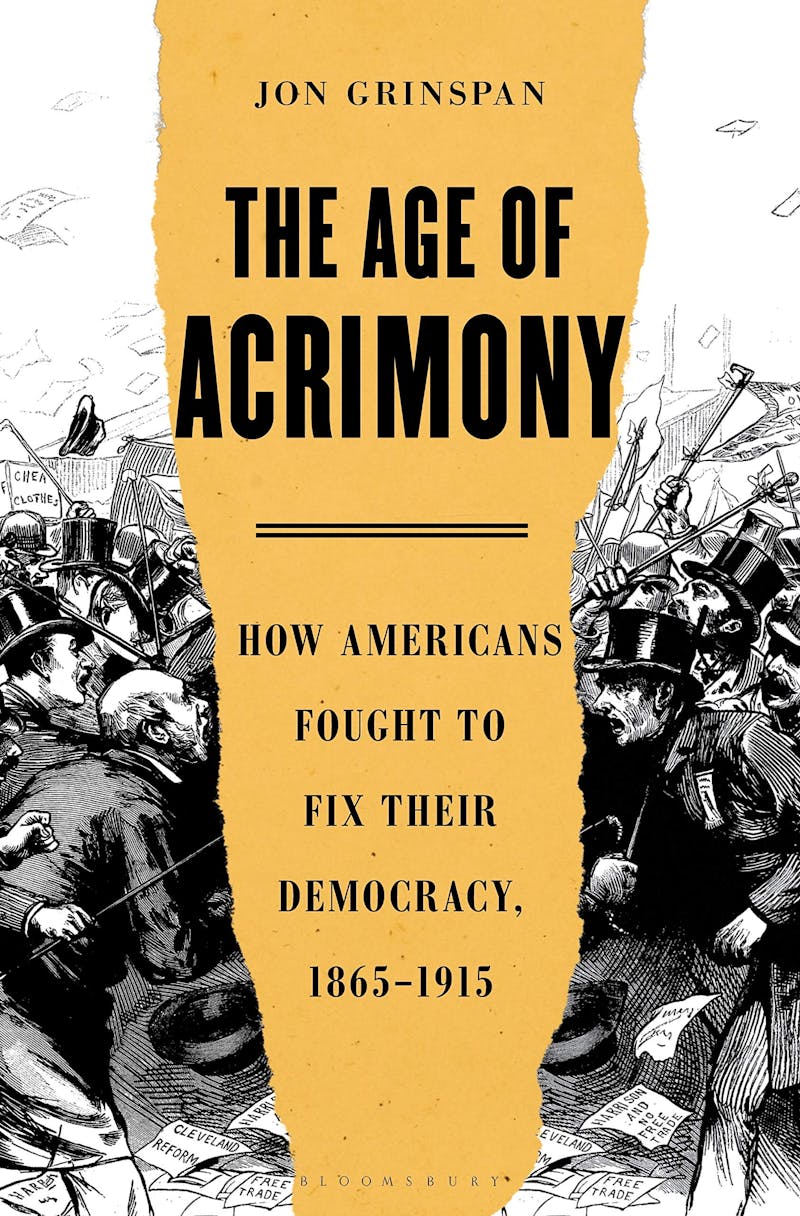
It’s not, of course, that the convulsions of the age weren’t momentous. Rather, it’s that the impression of dramatic rupture and apocalyptic confrontation tends to crowd out the more measured and incremental conflicts that played just as powerful a role in the age’s epic efforts to create new forms of civic accountability and mass protest.
For this reason alone, Jon Grinspan’s nuanced and engaging study, The Age of Acrimony, is a welcome addition to the vast body of historical interpretations of what the Gilded Age meant for the erratic quest to fulfill the American nation’s democratic promise. Against the notion that our political system was, under the combined pressures of industrialism, urbanization, racial suppression, farm and labor insurgencies, and nativist backlash, evolving into a giant rolling shakedown administered at the behest of this or that powerful and conspiratorial faction, The Age of Acrimony stresses the broader currents of change in American mass politics. A sober inventory of the era’s signature political battles shows, as Grinspan writes, that the Gilded Age’s “fantastic number of scams and schemes … were outweighed by the votes and passions of tens of millions of citizens who had a greater cumulative impact.”
What makes these struggles so hard to parse for many historians is the glum verdict they delivered on small-d democracy in America: It appeared not only to be in disrepair but to be moving in reverse. “Massive public participation made it harder, not easier, to tackle the inequities of [the] era,” Grinspan, a curator of political history at the Smithsonian’s National Museum of American history, writes. “It was an engaged majority, not scheming minorities, that made politics so fascinating and frustrating.” Indeed, as the election cycles of the Gilded Age produced historic levels of voter participation, the specter of abuse and corruption in high office loomed ever larger—producing at the end of the age’s great conflagrations a mordant Progressive consensus that the best remedy for the ills of democracy was to engineer a new society that relied a lot less on it.
The era’s embrace of popular self-rule started, plainly enough, with the truly epic battle to win the franchise for the freedmen (as they were then known) emancipated from slavery during the Civil War. The bill that set in motion the eventual ratification of the Fifteenth Amendment to the Constitution won passage in the House of Representatives even before the conclusion of the Civil War—and as Grinspan notes, it was an affirmation of the great rising power of the industrial North: “Never in American history, except possibly for the Virginians of the founding generation, was one bloc so dominant as the postwar northern Republicans.” The first census after the war disclosed that three-fourths of the U.S. population lived outside the former Confederacy, and this demographic trend made itself felt in Congress, with northern Republicans claiming 70 percent of seats in 1865, and 80 percent a few years later. This broad political dynamic rendered the question of voting rights for freed male slaves and their descendants not simply a moral mandate but a prudent and calculating political one, since four million additional votes concentrated in the South promised to further consolidate Republican dominance in national politics.
The sponsor of the House measure was one of Grinspan’s dramatis personae in The Age of Acrimony: Pennsylvania Congressman William Kelley, a radical Republican dedicated to the steady extension of what he called “pure democracy” throughout American social and civic life. Kelley was the sort of itinerant and self-made political leader who is all but unrecognizable to the credentialed and moneyed political caste of the modern age. Whereas many congressional representatives from the Cold War forward could have been summoned out of the genteel WASP romances of John Galsworthy, Kelley was pure Dickens: a poor Philadelphian who witnessed his family’s possessions sold on the street after the death of his father, he was a former jeweler’s apprentice and printer’s devil who’d come of political age reading political literature out loud as a proofreading exercise. His working-class radicalism got him banished from the city of brotherly love, and so he launched his career in politics by thrusting himself onstage to speak at a rally of Locofos—Jacksonian labor advocates—in Boston in 1835. From then on, Kelley was something like the radical American Zeitgeist on horseback, informing Abraham Lincoln of his nomination as the Republican standard-bearer in 1860, sharing the stage with prominent Black abolitionists Frederick Douglass and Anna Dickinson, and collaborating with Susan B. Anthony and other feminist leaders in the then deeply unpopular cause of women’s suffrage.
Kelley’s career, together with that of his yet more radical daughter, Florence, epitomized the emerging cause of social democracy in the postbellum political world. And tellingly, the elder Kelley’s own vision of an equitable industrial-age political economy came to eclipse his commitment to radical Reconstruction. Smitten with the short-lived crusade of Greenback currency reform—the campaign to continue circulating the paper money that funded the Union war effort, free of the traditional deflationary burden of the gold standard—Kelley broke with the Grant administration’s monetary policies. He also repudiated the Republican defense of Reconstruction in the South, suddenly pronouncing that the former Confederacy was in “a settled condition.” As Grinspan notes, the political standing of African Americans was anything but favorably settled in the South; Kelley, like many white reformers, had simply availed himself of the luxury of pretending otherwise.
He left behind all the African Americans who had voted for him and bled for him, studied his speeches, and donated to his reelection campaigns.… Kelley abandoned Reconstruction, not because of any real change in an issue he had committed himself to, but because he was done with that issue. Within months, mobs in Clinton, Mississippi would massacre dozens of African Americans; the next year, more would die in Hamburg, South Carolina. Nothing was finished, except Kelley’s interest. Reconstruction died, in large part, because men like Kelley let it.
Significantly, Kelley’s betrayal came two years ahead of the formal abandonment of Reconstruction—the infamous backroom deal to suspend federal enforcement of its provisions in the South in exchange for Rutherford B. Hayes’s elevation to the presidency after the deadlocked 1876 presidential balloting. This was another fetishized piece of high-stakes political lore that concealed the deeper tectonic shift in our politics away from the quest for substantive racial equity that made this ugly grand bargain possible in the first place.
Grinspan excels at teasing out the deeply rooted (and long-enduring) backstories that propelled the landmark confrontations of Gilded Age politics. The marquee battle of the age was the 1896 presidential campaign, pitting Populist-Democratic fusion candidate William Jennings Bryan against conservative Republican Ohio Congressman William McKinley. But for all the regional and class rooting interests that shaped the contest, Grinspan writes, the most telling force determining the ultimate outcome of the vote was electoral and ballot reform—a campaign of voting restraint that dated back to the 1880s. The idea, central to the mobilization of reformers and intellectuals known as the Progressive movement, was to tamp down the boisterous, corruption-prone conduct of elections under the direction of urban bosses and graft-ridden statehouses—with their trademark marching clubs, saloons, and nighttime torch rallies. In their place, Progressives aimed to cultivate a more dispassionate, scientifically minded model of citizen engagement, in line with the aspirations of the Progressive vanguard of respectable, middle-class political leaders and reformers.
No longer were voters envisioned as a mass of excitable, corruptible, other-than-sober partisans embedded in networks of ward and neighborhood patronage and control; now they were deliberative and solitary citizens weighing the true public interest within the new sanctum of the secret ballot—an innovation that sought to reduce pre-issued party-line ballots and to dilute further the baleful influence of the ward heeler and precinct captain.
But this battery of procedural reforms—which in addition to the secret ballot, included so-called educational campaigning initiatives and “political clubs”—had the effect of narrowing the focus of American politics, while eventually dramatically depressing election turnouts. The aim, as the organizers of the fledgling Democratic Party club boasted, was to “bring politics indoors.” And sure enough, as The Washington Post observed during the 1892 presidential campaign, this new brand of electioneering “refuses to get noisy or to break out in the gooseflesh of barbecues, torchlight processions, brass bands, joint discussions &c.”
So the paradox of 1896 was an election that truly hinged on life-or-death questions of how and whether American democracy might adapt to new conditions of industrial plunder and affluent secession from the commonweal—and an outcome that was a distinctly muffled capitulation, procedurally speaking, to those very conditions. It began with the marketing of the candidates themselves—without an uprising of voters in locally organized marches and campaign events across the nation’s cities, presidential candidates themselves became, for the first time in our political history, the prime motive forces of campaigning. Rather than relying on “the excitement of participation,” Bryan in particular seized the initiative to agitate and entertain voters from the stump amid a landmark national campaign tour. “In 1896, the candidate thrilled the public,” Grinspan writes. “He was the subject; they were the object. He was the actor; they were the spectators.”
McKinley, for his part, assumed the role of subject in the retiring and serene manner of a candidate confident that the nation’s financial and political establishment would smoothly docent him into the nation’s highest office: He campaigned from his front porch in Canton, Ohio, while Republican operatives marshaled half a million voters onto his front yard over the course of the campaign. This stately charade masked an enormous outlay of party resources, however—not just to ferry McKinley supporters in and out of Canton, but to publish a flood of educational campaign pamphlets to school voters on McKinley’s hard-money financial platform and support for an industrial tariff. The party churned out 120 million pamphlets, in 275 different formats, in a host of languages. The net result was a triumph of the new managerial model of political campaigning, with the personality of the lead candidate as the great galvanizing selling point. “It all grew from that same ‘alone with his conscience’ revolution in voting: a fear of mass, public participation and a faith in the wisdom of a solitary, decisive man,” Grinspan notes. “‘Personal leadership’ was the trick, one writer argued in 1894. ‘The people will not come out for a principle, but they will come out for a man.’”
In 1896, William McKinley was very much the man. For all the sorrowful anatomies of Bryan’s failure to prevail, 1896 delivered a clear mandate for the tight-money apostle of high-tariff industrialism—and the new breed of high-capitalist politicos epitomized by McKinley’s lead campaign adviser, Mark Hanna. Rather than a clash of titanic social forces, the balloting in 1896 represented “a portal,” Grinspan observes, “combining the old campaign convulsions of the nineteenth century with the more restrained, merchandised, managed, candidate-focused races of the twentieth.” On the other end of that portal, he notes, was a dramatic collapse in voter turnout, which steadily eroded the share of eligible Americans casting ballots on Election Day from a robust 79.3 percent in 1896 to an anemic 48.8 percent in 1924—a dropoff of nearly one-third over seven presidential cycles. (The one exception to this trend, not surprisingly, was wealthy voters, who began registering their first proportional increase in turnout after 1900.)
The losers in this great transitional upheaval were immigrants and the nation’s newly disfranchised Black population. The explicit aim of the new battery of election reforms, temperance advocate Francis Willard candidly averred, was to produce a “safeguard on the ballot-box at the North that would sift out alien illiterates.” In the South, meanwhile, the land rush of racist voting suppression measures that came to be known as Jim Crow took root under the same rationale of producing a better-educated, more deliberative electorate—and employed the same ugly and bigoted rhetoric. In 1890, Louisiana Governor Samuel McErnery denounced the “impersonal mass” of African American voters “hovering over us and threatening our civilization.” That same year, the Mississippi legislature enacted a new constitution, instituting poll taxes and literacy tests to disenfranchise Black citizens; it became the model for all other Southern states to finally eliminate the substantive right to vote for African Americans.
The logic of the Jim Crow suppressions worked to make it seem as though the solitary Black citizen himself was responsible for the theft of his vote: “The Macon Telegraph argued, and the New York Times reprinted, that ‘if the Australian ballot reduces the negro vote in the South, it is the fault of the negro.’” Even the Progressive era’s great crusade to expand the franchise—the fight for women’s suffrage, which culminated in the passage of the Nineteenth Amendment to the Constitution—“was deliberately promoted as a way to offset the power of a working-class and increasingly foreign-born male electorate,” Grinspan writes, citing the testimony of a new woman voter who hailed her breakthrough first ballot as “a doubling of the respectable vote.”
Grinspan seeks to wrest a salubrious civic moral from his narrative of expert ascendance and broad participatory decline, but it comes off as something of a rushed afterthought that overtly clashes with much of the astute and arresting analysis that fills the body of The Age of Acrimony. Because the guard rails of democratic experimentation in American political culture have proven reasonably sturdy, Grinspan contends, we can experience an “incredible variability” in its provisional outcomes, “with plenty of room for ugliness without apocalypse, and for reform without utopia.… The capacity for positive or negative change lies with the American people ourselves.”
The sentiment sounds all too close to the difference-trimming alibis favored among the anti-democratic, and resolutely anti-political, Progressive reformers featured in Grinspan’s study. If ordinary Americans possess such an enormous capacity for positive change, how exactly have We the People engineered the all-but-complete plutocratic capture of not merely the three branches of the federal government but also of most of the nation’s state legislatures and governorships, which have descended into a state of open graft that would have made Mark Twain and Charles Dudley Warner blush? How did we abet the rising fascist movement on the right? Democratic excesses may have played some role in creating the impression that the Gilded Age suffered from a mounting crisis of ungovernability, but it’s difficult indeed to trace the many political ills of America in the present age to anything like a surplus of small-d democratic participation.
Meanwhile, one hardly has to strain one’s vision to make out who the actual culprits are, and what their agenda is. In the Trump era and beyond, the vote-restraining agenda of the high Progressive era has entered what might be called its surreal high-baroque phase. In a parodic version of the 1880s campaign against alleged abuses at the ballot box, Republican Party governing elites have worked to discount legitimate votes by invoking an entirely fabricated plague of mass voter fraud. This latest anti-democratic prospect is something a good deal more serious than “ugliness without apocalypse”: It is a bid for the institution of permanent minority rule, instigated on the pretext that a raw and ungainly coalition of immigrants, nonwhite constituencies, and assorted anti-American fellow travelers are trying to subvert the republic. It is, in other words, the through-the-looking-glass limit case of the Progressive era’s own trademark assault on popular democracy. And close readers of Jon Grinspan’s edifying and welcome study of the first major era of anti-democratic retrenchment in America should know that it’s nothing to be complacent about.
